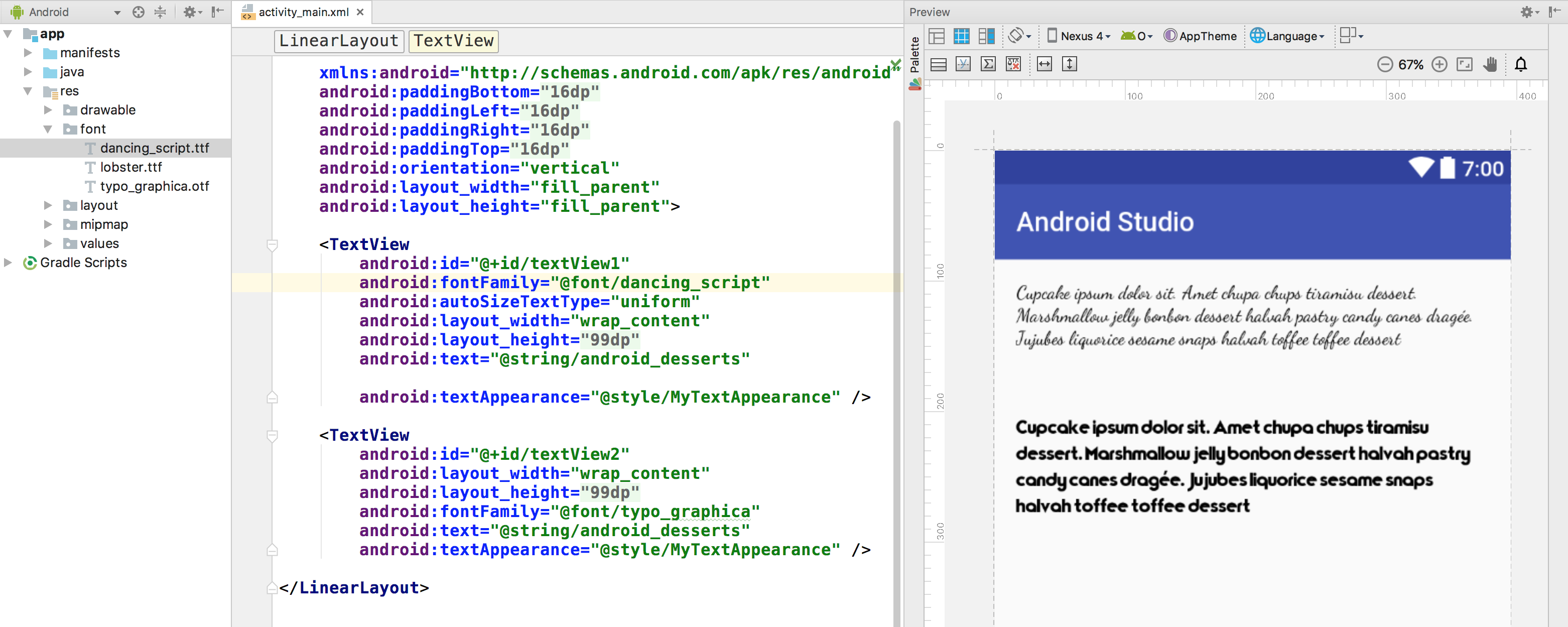
- #Android studio typeface examples how to
- #Android studio typeface examples android
- #Android studio typeface examples code
Let's take a look at a function, which takes this into consideration. Now we learned what values the int textStyle can be set to.
#Android studio typeface examples android
If there is no font style defined, we default to the regular font style. Let us create an Android application with Kotlin support in Android Studio and change the text style of TextView to bold. We chose Typeface.NORMAL since that is the most appropriate value when taking a look at the used constants in the TextView class: The last parameter defines the default value, if the property was not set. The second parameter is the property name in our case textStyle. ANDROID_SCHEMA is the constant with the same value as you define it in the top level of your XML ( xmlns:android=""). We can use that object to get the XML property information with the getAttributeIntValue() function. To run the app from Android studio, open one of your project's activity files and click Run icon from the toolbar. Here is what I did: package de. import import import import public class.
#Android studio typeface examples how to
This happens with one line of code: int textStyle = attrs.getAttributeIntValue(ANDROID_SCHEMA, "textStyle", Typeface.NORMAL) Īttr are the attributes which are applied to the TextView with the second constructor parameter. Well I couldn't figure out how to do it with the available classes so I extended the TypefaceSpan on my own an now it works for me. The first challenge is to get the information, which was defined in textStyle. Lastly, we've to adjust our CustomFontTextView class to understand the textStyle parameter and apply to the correct font style. android android-application android-studio android-app android-sample android. We've the font files and know that we can continue to use the textStyle property. Side note: if you are interested in the option of using customfont:textStyle, we'll use that method in the next blog post to change the font via XML.

#Android studio typeface examples code
There is a bit of code necessary, which we'll show in the next section. However, we prefer to continue to use the standard android:textStyle instead of a special customfont:textStyle or similar.

The last textStyle works on normal TextViews, but not if you apply a custom font. Android Studio automatically generates the relevant XML files that are needed to render the font correctly in your app. The first five XML properties are standard and work without any customization. If you worked with Android before, nothing of the following code snippet should surprise you: In this blog post, we changed the package name from a code snippet of our eat foody project to an open source class in our tutorial repository. You've seen in the previous blog post how to setup a custom view for use in the XML layout files. Next, we'll look how to integrate the textStyle property. The base for applying text styles to our custom font is done.

Continuing our example from last week with Source Sans Pro, your assets folder now should look like this: The first thing to do is adding the font files (preferably as.


 0 kommentar(er)
0 kommentar(er)
